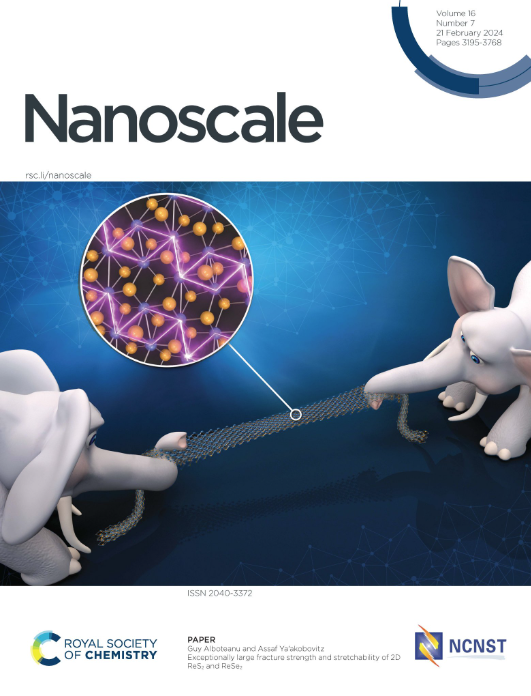Spectroscopic evidence of intra-unit-cell charge redistribution in a charge-neutral magnetic topological insulator
IF 5.8
3区 材料科学
Q1 CHEMISTRY, MULTIDISCIPLINARY
引用次数: 0
Abstract
The magnetic topological insulator MnBi6Te10 has emerged as a promising candidate for realizing the quantum anomalous Hall effect (QAHE), owing to its ability to retain ferromagnetism through precise control of anti-site defects. The next important task for realizing the QAHE is to tune the chemical potential into the energy gap formed by the broken time-reversal symmetry. Here we reveal an intra-unit-cell charge redistribution even when the overall doping suggests a near-charge-neutral condition. By performing time- and angle-resolved photoemission spectroscopy (trARPES) on the optimally 18% Sb-doped MnBi6Te10, we observe transient surface photovoltage (SPV) effects on both the MnBi2Te4 and single-Bi2Te3 terminations. Furthermore, we observe a time-dependent splitting of the band structure indicating multiple SPV shifts with different magnitudes. This observation suggests that adjacent plateaus with nominally the same terminating layer exhibit a strong intra-unit-cell charge redistribution, resulting in spontaneous electrical polarization. This is consistent with static micro-ARPES measurements revealing significant doping deviations from the charge-neutral configuration. Our findings underscore the challenges of engineering the family of Mn-Bi-Te materials to realize QAHE purely through chemical doping. Achieving the desired topological quantum phase requires both a uniform carrier doping and a ferromagnetic ground state. Furthermore, the light-induced polarization within each unit cell of ferromagnetic Mn(Bi0.82Sb0.18)6Te10 may open new possibilities for optoelectronic and spintronics.求助全文
约1分钟内获得全文
求助全文
来源期刊

Nanoscale
CHEMISTRY, MULTIDISCIPLINARY-NANOSCIENCE & NANOTECHNOLOGY
CiteScore
12.10
自引率
3.00%
发文量
1628
审稿时长
1.6 months
期刊介绍:
Nanoscale is a high-impact international journal, publishing high-quality research across nanoscience and nanotechnology. Nanoscale publishes a full mix of research articles on experimental and theoretical work, including reviews, communications, and full papers.Highly interdisciplinary, this journal appeals to scientists, researchers and professionals interested in nanoscience and nanotechnology, quantum materials and quantum technology, including the areas of physics, chemistry, biology, medicine, materials, energy/environment, information technology, detection science, healthcare and drug discovery, and electronics.
 求助内容:
求助内容: 应助结果提醒方式:
应助结果提醒方式:


